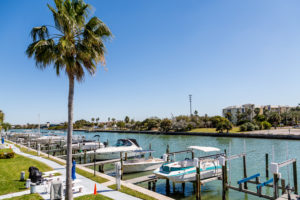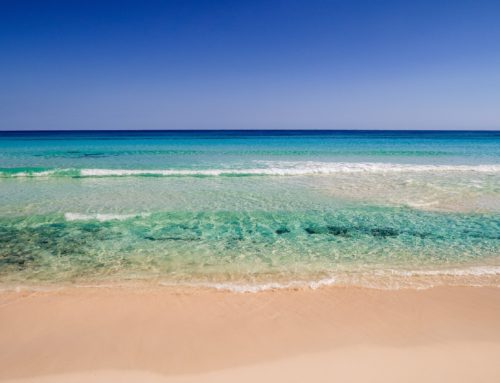A lot goes into building a dock in The Florida Keys: building materials, permit requirements, and even the accessories must be decided upon before your project starts. It can be easy to overlook certain details if you don’t know the ins and outs of the building process. Here are some of the most important do’s and don’ts to consider when building your dock.
Pilings
In terms of pilings, one option is timber pilings, which are made out of wood and pressure treated for full saltwater immersion. These pressure-treated pilings are the cheapest piling option, but also the weakest, lasting roughly twenty-five years and being susceptible to rot and marine boring organisms. Piling wrap can be used to combat this degradation, but unless it is done properly or when the pilings are brand new, it can end up wasting your time and money. If done incorrectly, you can trap harmful materials inside the wrap or allow for water to penetrate the wrap entirely and negate any protection it might have created. It’s also advised that you not use timber pilings inside a stagnant water canal, as it can further increase pile rot due to the high number of organisms there.
Concrete piles, on the other hand, are much stronger than timber and last significantly longer. That being said, they are also the most expensive piling choice and are much more difficult to install as they are susceptible to cracking. It’s for this reason that you want to make sure you use a good pile-driver head during installation to minimize the chance of cracking while driving. Even the smallest hairline crack can lead to saltwater intrusion, which further leads to rebar rusting and crumbling of the structural integrity. If you intend to install a boat lift in the future larger than a 20,000 lb lift, you will need concrete pilings to do so. You also have the choice of square or round pilings, and while round pilings look great, they are extremely fragile and can break easily. We never recommend round concrete pilings.
On top of all that, regardless of the type of pile, you’ll need to seal and apply piling caps to each piling to ensure it is not exposed to water after being cut.

Framing and Decking
You are mostly faced with two decisions when choosing the decking for your dock: wood and concrete.
Concrete decks are easily the strongest of the two materials and require concrete pilings along with them. One of the perks associated with a concrete deck includes being able to install a boat lift, although you’ll want to make sure your contractor is using 5000 PSI concrete with a corrosion inhibitor additive, as this will help prevent future spalling, and top it off with fiber to reduce the chance of surface cracking. It is also recommended that you stick to using concrete decking if you intend to use concrete pilings, as installing a wood deck on concrete pilings will require drilling into the concrete which can increase the odds of saltwater finding its way in and causing damage. However, if you do choose to use timber framing with concrete piling, using epoxy can eliminate some of that risk through sealing.
When working with timber framing, all timber should be 0.60 CTA, which is the maximum legal pressure-treating rating for framing lumber and will help fight rot. It’s important to keep in mind any staining, sealing, sanding, and painting that will be needed for timber framing and decking. If you don’t want the hassle of that kind of maintenance, composite decking is also an option, which will run at a higher price but eliminate the need for much upkeep and last longer overall. They come in a variety of different colors and synthetic materials, but it should be noted that the darker the color, the hotter the material will be in the sun.
Another material that should be taken into account is steel. Any stainless steel being used during construction should be 316 stainless steel, as the Florida Keys has an extremely high saltwater salinity rating that will rust through other steels like 304 within the first year.
Building Heights
Believe it or not, height actually matters a great deal when building a dock. Often times it is easiest to permit docks when they are five feet above mean high water. However, while it is great for permitting, it is also less effective when actually using the dock because you will be elevated five feet above the average high tide and even higher during low tide (approximately 6.5′!). This can make it difficult to get in and out of the boat and a lift or ladder will be needed. More useful elevations for docks are generally around three to three and a half feet above mean high water. Any lower than that and you are susceptible to being in the water during high tides and can rot or rust your dock faster.
Piling heights should also be taken into consideration, as well as whether or not you want them above or below the deck and how tall they will be. Other factors include putting accessories onto the piling or not and if you want the decking to center piles.
Accessories
Finally, you’ll want to take note of any and all accessories that could potentially be added to the dock. This includes things like cleats, fish cleaning tables, ladders, bumpers, aluminum standoffs, electricity, plumbing, and just about anything else one might include on their dock. It’s important to weigh the cost-to-benefit ratio for each of these and determine whether or not they would be best utilized when using your dock.
To-Do or Not To-Do?
When it comes to the material being used to build a dock, the type of pilings, which accessories to choose, the height of your dock, along with its framing, you have a couple of different options. All of these factors come into play building a dock, and understanding what to do and what not to do in regard to each aspect can go a long way in terms of constructing a dock that stands the test of time.
Want to learn more about dock building in the Florida Keys? Here at Rapid Permits and Engineering, we’re prepared to help you out. Simply contact us or give us a call at 365-916-1400 today!





